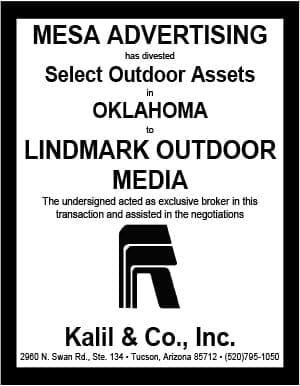Billboard Insider is running a series in which Arthur Outdoor’s James Douglas talks about starting, running and selling an out of home company. Last week James talked about getting started. Today he talks about permitting.

Permitting
Permitting is pretty straightforward – as long as you are familiar with and play by the rules. There are three things you need.
- Land Lease
- State Permit
- City permit.
As mentioned above, the trick to obtaining these permits are to know the United Land Development Code or Zoning laws like the back of your hand. This will help you to create a checklist of the regulations your billboard needs to meet before you can built the sign. Knowing these rules will save you hundreds of hours and thousands of dollars if you are knowledgable.
There are going to be opposing voices at every turn saying “There is no way a billboard can be built in that location.” Sometimes this is true – however there will be instances where knowledge of the zoning code might allow you to stand your ground and prove otherwise.
The last important piece of the puzzle is relationships. Ensuring that you build relationships with your Land Owner, Local Government, and the State Out of Home Officers. If you are kind and look out for them, they will look out for you.
Know your definitions
My family says that wisdom comes from understanding definitions. When you understand the ordinances and what they will allow and not allow, you can then do what it takes to make your billboard project possible. Whether it’s a variance hearing, making modifications to your structural designs, or choosing another piece of the property – many times, small changes and/or negotiations can make an impossible project possible.
Which was harder? The Georgia state permit or the city permit.
It depends. Every state will have their own set of rules. In the state of Georgia, digital permits are few and far between as they must be 5,000 feet from the nearest edge of the next digital on the same side of the road.
Each city and often times each county will have their own set of rules as well. These can be more or less restrictive than the state.
The key here, again, is knowing the state and city regulations like the back of your hand – abiding by them – and, when necessary, standing your ground to prove your new billboard location IS within their rules.
Locations
A few standard factors for a good billboard location include:
- Visibility
- Traffic Count & Rush Hour Peaks
- Audience Demographics
- Residential or Commercial Surroundings
- Proximity to Clients
In our experience, it seems as though there are two ways to build a billboard company:
- Buy one or a collection of smaller companies around you.
- Build from the ground up. Go where the big billboard companies will not go. Find opportunity in the cracks.
Arthur Outdoor was not backed by a VC or PE fund, which made the build vs. buy decision quite simple.
Rome is a bit removed from the major I-75. Each of our signs were build on secondary roads that locals would pass every single day on their way to work. As Rome continues to expand, so will the traffic count on each of these roads. If you go to the edge of the market, you are likely to find eligible locations for billboard construction where the big companies have stopped.
The last point here is the type of sign. Remember – not every billboard needs to be a 14 x 48. In our case, posters (12 x 24) were our workhorses.
[wpforms id=”9787″]
Paid Advertisement

















